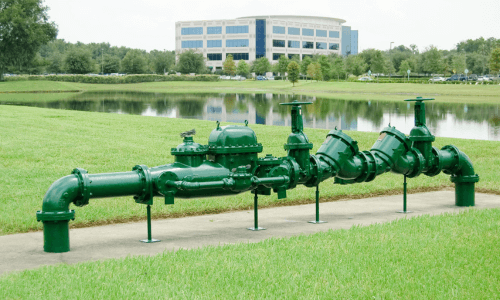
Why Is Backflow Testing So Important?
Backflow testing is a critical aspect of maintaining a safe and healthy water supply. It involves checking backflow prevention devices to ensure they are functioning correctly and preventing contaminated water from reversing into the clean water supply. Here, experts from Local Plumber in Florida provide a comprehensive overview of the importance of backflow testing, how it works, and why it is essential for both residential and commercial properties.1. Understanding Backflow and Its Dangers
What Is Backflow?
Backflow occurs when the normal flow of water is reversed, causing water from non-potable sources to flow back into the potable water system. This can happen due to changes in pressure within the plumbing system.Causes of Backflow
- Backpressure: Occurs when the pressure in the downstream piping is greater than the supply pressure, pushing contaminated water back into the clean water supply.
- Backsiphonage: Happens when there is a negative or reduced pressure in the supply piping, such as during a water main break or heavy water use, pulling contaminants into the potable water supply.
Risks of Backflow
Backflow can introduce various contaminants into the clean water supply, including:- Chemicals: Pesticides, fertilizers, industrial chemicals.
- Biological Contaminants: Bacteria, viruses, and other pathogens.
- Non-Potable Water: Water from irrigation systems, pools, and industrial processes.
2. Importance of Backflow Prevention
Protecting Public Health
Ensuring that backflow prevention devices are working correctly is vital for public health. Contaminated water can lead to serious health issues, including gastrointestinal illnesses, infections, and more severe diseases.Compliance with Regulations
Many local and state regulations require regular backflow testing to protect the public water supply. Compliance with these regulations is mandatory and helps avoid fines and penalties.Preventing Property Damage
Contaminated water can cause damage to plumbing systems, appliances, and fixtures. Regular backflow testing helps prevent costly repairs and replacements.Maintaining Water Quality
Backflow prevention devices ensure that the water entering your home or business remains clean and safe for consumption and use.3. How Backflow Prevention Devices Work
Backflow prevention devices are installed at points where there is a risk of cross-connection within the plumbing system. Several types of devices serve different purposes:Air Gap
- Description: A physical gap between the water supply outlet and the receiving vessel.
- Function: Prevents backflow by ensuring that contaminated water cannot reach the clean water supply due to the physical separation.
Reduced Pressure Zone (RPZ) Valve
- Description: A valve assembly with two independent check valves and a relief valve.
- Function: Maintains a lower pressure zone between the check valves to prevent backflow.
Double Check Valve Assembly (DCVA)
- Description: A device with two check valves in series.
- Function: Prevents backflow by ensuring that at least one valve remains closed if the other fails.
Pressure Vacuum Breaker (PVB)
- Description: A device that includes a check valve and an air inlet valve.
- Function: Prevents backsiphonage by allowing air to enter the system when the pressure drops.
4. The Backflow Testing Process
Backflow testing involves a series of steps to ensure that prevention devices are functioning correctly:Inspection
- Visual Check: Inspect the device for any visible damage or wear.
- Operational Check: Ensure the device is installed correctly and all components are accessible.
Testing
- Pressure Testing: Measure the pressure in the system to ensure it meets required standards.
- Valve Testing: Check the operation of the check valves and relief valves to ensure they open and close correctly.
- Air Inlet Testing: For PVBs, ensure the air inlet valve operates correctly during backsiphonage conditions.
Maintenance
- Cleaning: Remove any debris or buildup that may affect the device’s operation.
- Repair or Replace: Fix or replace any damaged or malfunctioning components.
Documentation
- Record Keeping: Document the test results and any maintenance performed.
- Certification: Provide certification of compliance with local regulations.
5. Frequency of Backflow Testing
The frequency of backflow testing depends on several factors, including local regulations, the type of device, and the risk level of contamination. Generally, annual testing is recommended, but some systems may require more frequent inspections.High-Risk Systems
- Commercial Properties: Businesses often have more complex plumbing systems with higher risks of contamination.
- Industrial Facilities: Places that use chemicals or have large irrigation systems need more frequent testing.
Residential Properties
- Standard Homes: Annual testing is typically sufficient for most residential properties.
- Homes with Irrigation Systems: Properties with irrigation systems or pools may require more frequent testing.
6. Benefits of Regular Backflow Testing
Ensuring Safe Drinking Water
Regular testing ensures that your backflow prevention devices are working correctly, keeping your drinking water safe from contamination.Avoiding Legal Issues
Compliance with local regulations helps avoid fines and legal issues. Regular testing provides the documentation needed to prove compliance.Protecting Plumbing Systems
Preventing backflow reduces the risk of damage to your plumbing system and appliances, saving on repair and replacement costs.Peace of Mind
Knowing that your water supply is protected from contamination provides peace of mind for homeowners and business owners alike.7. Choosing a Professional for Backflow Testing
When selecting a professional for backflow testing, consider the following:Certification and Experience
- Qualified Technicians: Ensure the technician is certified and experienced in backflow testing.
- Reputation: Look for professionals with good reviews and a solid reputation in the community.
Comprehensive Services
- Full Inspection: Choose a service that offers thorough inspections and maintenance.
- Emergency Services: Select a provider who offers emergency services in case of urgent issues.
Transparent Pricing
- Clear Estimates: Obtain clear and detailed estimates before work begins.
- No Hidden Fees: Ensure there are no hidden fees or unexpected charges.
Customer Service
- Responsive: Choose a company that is responsive to inquiries and provides excellent customer service.
- Follow-Up: Ensure they offer follow-up services to address any issues that may arise after testing.
8. Case Studies
Case Study 1: Commercial Property
Situation: A commercial property in Tampa experienced a drop in water quality, with discolored water and unpleasant odors.Solution:
- Inspection: A certified technician inspected the backflow prevention device and found it malfunctioning.
- Testing: The device was tested, and both check valves were found to be faulty.
- Repair: The faulty components were replaced, and the device was retested to ensure proper operation.
- Outcome: The water quality improved immediately, and the property remained compliant with local regulations.
Case Study 2: Residential Property
Situation: A homeowner in Tampa noticed a sudden change in water pressure and an unusual taste in the drinking water.Solution:
- Inspection: A visual inspection revealed no visible damage to the backflow prevention device.
- Testing: Pressure testing indicated that the device was not maintaining the required pressure levels.
- Maintenance: The device was cleaned, and minor repairs were made to the check valves.
- Outcome: The water pressure stabilized, and the taste returned to normal, ensuring safe drinking water for the household.
Conclusion
Backflow testing is essential for maintaining the safety and quality of your water supply. Regular testing ensures that backflow prevention devices are functioning correctly, protecting against contamination, and complying with local regulations. Whether you own a residential or commercial property, understanding the importance of backflow testing and investing in regular maintenance can prevent health risks, legal issues, and costly repairs. Trusting certified professionals like the experts at Local Plumber in Florida can provide peace of mind and ensure that your water remains clean and safe.
By prioritizing backflow testing and ensuring compliance with regulations, you contribute to the overall safety and well-being of your community. Clean, safe water is a fundamental necessity, and through diligent maintenance and regular testing, you can help preserve this vital resource.
Contact us today to learn more about maintaining your water heater and how it can benefit your home and family. Email us at services@local-plumber.com or call us at (833) 247-7667 (POOP).





Leave a comment